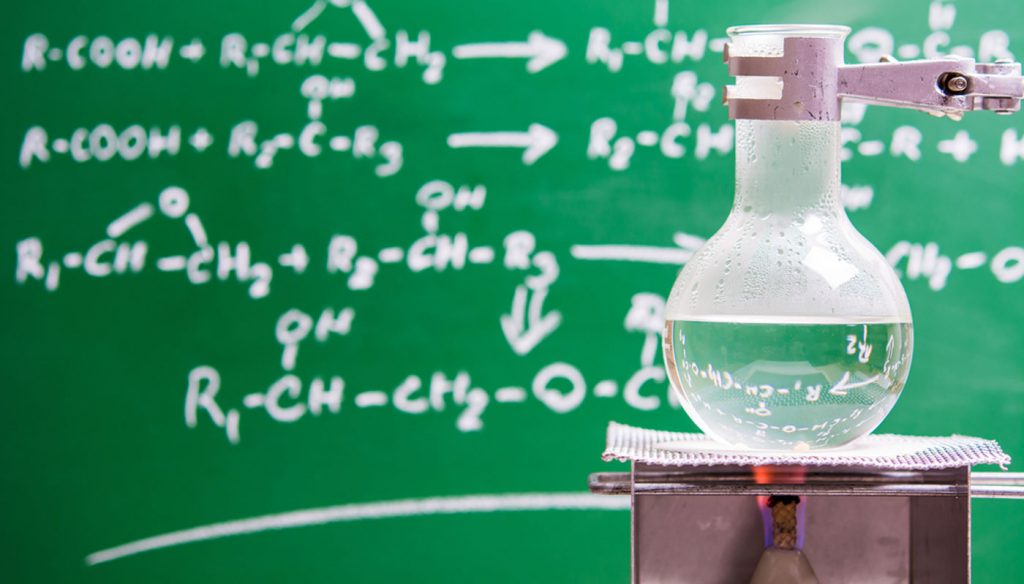The Coolest Chemistry Discoveries Enabled by AI (So Far)
- August 19, 2025
- By Ryan Harris
Imagine a lab where the dullest, most time-consuming tasks happen in the background while scientists leap straight to the breakthroughs. That’s exactly what AI is bringing to chemistry—transforming tedious trial-and-error into lightning-fast discovery.
From predicting reactions before they happen to inventing molecules that could change the world, AI has become a research partner that never sleeps. And the most exciting part? We’re only just getting started.

AI as the Ultimate Reaction Predictor
Chemists have always relied on intuition, experience, and a lot of patient experimentation to figure out how molecules will behave. Even with powerful simulation tools, predicting the exact outcome of a reaction was still an uncertain art. AI changes that by turning chemical prediction into something more like a Google search than a gamble.
By training on millions of past reaction records, machine learning models can recognize patterns invisible to humans. They’re not just guessing—they’re calculating the most probable reaction pathways based on chemical structures, environmental conditions, and even subtle properties like electron density. This means AI can often pinpoint the perfect combination of temperature, solvent, and catalyst without a single failed trial.
Take IBM’s RXN for Chemistry, for example. You type in the molecules you want to combine, and in seconds, it suggests a complete synthesis route. What once required dozens of lab tests and scientists risking with hazardous substances can now be generated instantly. Instead of starting with broad experiments, researchers jump directly to the most promising approach, saving time, money, and materials.
This predictive power is also unlocking reactions that humans might never think to try. AI can propose unconventional pathways, sometimes suggesting methods that sidestep hazardous steps or avoid costly reagents. In a world where innovation often depends on speed, being able to predict and plan with near-perfect accuracy is a massive competitive edge.
Designing New Molecules from Scratch
In pharmaceuticals, this means AI can dream up molecules that perfectly fit the shape of a disease-related protein, like a custom-made puzzle piece. Systems like DeepMind’s AlphaFold first predict the shape of proteins with stunning accuracy, while platforms such as Insilico Medicine’s PandaOmics generate new molecules tailor-made to interact with them. This can shrink the drug discovery timeline from decades to just a few years—or even months.
But medicine is just one application. AI-designed molecules are also being created for better energy storage, such as ultra-stable electrolytes for batteries, or environmentally friendly herbicides that target weeds without harming crops. For example, instead of testing thousands of pesticide variations in the field, AI can screen millions of possibilities in silico and select the top contenders before a single drop is mixed in the lab.
The beauty of this approach lies in its efficiency and scope. Humans might be limited by what’s familiar, but AI can traverse molecular combinations no one’s even considered, giving us access to chemical innovations on a scale that was once unimaginable.
While traditional companies (as many as 83% of them globally) believe AI will help them take the next step, the world of chemistry is where AI truly flexes its creative muscle. Rather than working within the boundaries of known chemistry, generative AI algorithms explore chemical “space”—a nearly infinite set of possible molecular structures—to find candidates that match a desired set of properties.
The Rise of Self-Driving Labs
Now picture this: you lock up the lab at 6 p.m., head home, and while you’re having dinner or sleeping, your experiments keep running. Self-driving labs, powered by AI and robotics, make that possible. They’re like automated research teams that can set up reactions, monitor results, and decide on the next steps—all without human hands.
These labs combine robotic arms, high-throughput screening machines, and AI-driven planning systems. The University of Liverpool’s mobile robot chemist is one of the most famous examples—it roams the lab, works around the clock, and can carry out thousands of experiments autonomously. The AI brain behind it analyzes the results in real time, making decisions on the fly about which chemical combinations to try next.
The advantages go far beyond productivity. Self-driving labs can operate in extreme or hazardous environments, like handling toxic substances or testing reactions at high pressure. They can run risky experiments that humans might avoid, safely pushing the boundaries of what’s possible.
And perhaps most importantly, every experiment feeds back into the AI’s knowledge base. Over time, these systems become even better at predicting and optimizing results, creating a virtuous cycle where discovery accelerates exponentially. The future of chemistry might be less about scientists doing the experiments and more about scientists designing the questions for these automated labs to answer.
Environmental Chemistry Gets an AI Boost
Some of the most urgent problems in chemistry are environmental: breaking down plastics, reducing industrial waste, capturing carbon dioxide, and finding safer alternatives to harmful substances. AI is proving to be a crucial ally in tackling these challenges head-on.
Take plastic pollution. Researchers have used AI to identify enzymes capable of breaking down polyethylene terephthalate (PET), one of the most common plastics, at record speed. Instead of years of lab work to test enzyme mutations one by one, AI can model thousands of variants in silico, pinpointing the ones most likely to work efficiently in real-world conditions.
Carbon capture is another area seeing rapid progress. AI simulations can model how different materials, like metal-organic frameworks, trap CO2 molecules. By analyzing trillions of potential combinations, AI can narrow the field to a handful of promising candidates for lab testing, cutting years off the research timeline.
Even in industrial chemistry, AI is helping design greener manufacturing processes. It can recommend catalysts that minimize toxic byproducts or propose solvent-free reactions that reduce waste. These optimizations not only protect the environment but can also cut costs, creating a win-win scenario for companies and the planet.
Where AI Chemistry Goes Next
The trajectory is clear: AI is moving from assistant to co-pilot—and eventually, perhaps, pilot—in the realm of chemistry. As models grow more sophisticated and datasets expand, we may see AI systems capable of designing a drug, orchestrating its synthesis, testing it, and optimizing it without direct human intervention.
This raises big questions. How do we ensure the data is accurate and free from bias? How do we make AI decision-making transparent? And how do we integrate these systems into labs without disrupting workflows? These challenges are real, but so is the potential payoff.
We’re entering an era where a line of code might lead to the next breakthrough in medicine, materials, or environmental science. The speed, creativity, and precision AI brings to chemistry are unlike anything we’ve seen before—and they’re only going to get better.
More from the blog

Kids Discover Talks with Television Lighting Designer Christopher Landy About the Rockefeller Center Christmas Tree Lighting
- December 9, 2025

It’s the Most Wonderful Time of the Year… For Community Service Projects!
- December 8, 2025

The Rockefeller Center Christmas Tree Lights the 2025 Holiday Season in New York City
- December 3, 2025